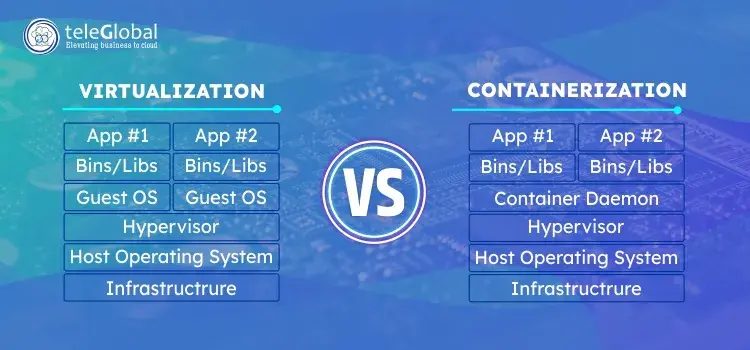Published Date :
Virtual Machines Vs Containers
Virtual Machines & Containers: Is One Better Than The Other?
Not a long time ago, new hardware was the only route to scaling performance. The capital cost of investing in new hardware, Software-defined, virtualized computing environments, and the complementary cost of maintaining them was a high bar to ownership. The cloud in general and virtualization, in particular, changed all that. Organizations now have much more flexibility in expanding their infrastructure through virtualization and containerization.
While virtualization and containerization are often used interchangeably, they differ in many respects. The most significant being the way they function. Containers power the virtualization of operating systems, allowing them to run multiple workloads under a single operating system. On the other hand, virtualization technology enables organizations to meet the ever-increasing computing needs without constant investments in new hardware.
Virtualization & Containerization: Points of difference
| Virtualization | Containerization |
|---|---|
| Delivers complete virtual machine’s | A specialized type of virtualization that isolates apps in their own virtualized environments rather than driving their own Operating Systems (OS) |
| VMs are standalone machines. Unlike containers, multiple VMS does not use the same OS | Containers share components of physical servers, thus many containers can run on a single server using the same OS, while keeping their application data separate |
| Installing patches, fixing bugs, etc. is not as easy to manage as with containers. | Easier to manage—installing patches, fixing bugs— than VMs as every container is not linked to its OS |
| Problems with a single VM do not affect other VMs | Problems with one system hamper multiple containers |
| Hardware is virtualized to run multiple OS instances | containers enable virtualization of an OS, so multiple workloads can be run on a single OS instance |
| Comparatively heavier and slower, taking minutes to start up | Containers are portable, agile and fast, taking seconds to start |
Their biggest differentiator between containerization and virtualization is the temporary nature of containers. Orchestration allows several copies of a container to coexist in a system. Older versions of containers coexist with new versions. If one container fails it can be deleted and replaced without affecting services. If an operation fails it too can be easily replaced with new versions, as required.
Containers comprise diverse services. These can include a web server such as a virtualization workload system that is capable of predicting the requirement for scaling out containers based on traffic.
Virtual Machines or Containers, Which Is Better?
There is no single correct answer. The choice depends on the organization’s objective. VMs enable the handling of existing tasks at hand, while maintaining consistency in environments isolated with a layer of reflection. This reflection layer allows servers to be split into individual VMs, each running a distinctive working framework.
Container orchestration allows an elective virtualization strategy: a solitary working framework can run a broad spectrum of users on the cloud.
Another approach in choosing between VMs and containers factors that VMs run distinctive working frameworks under a single process hub; whereas, containers allow the ability to virtualize working frameworks.
Need help with your cloud?
"No worries! Our experts are here to help you. Just fill the form and we'll get back to you shortly!"
Our Partners


 +919356301699
+919356301699 hello@anetautomation.com
hello@anetautomation.com
